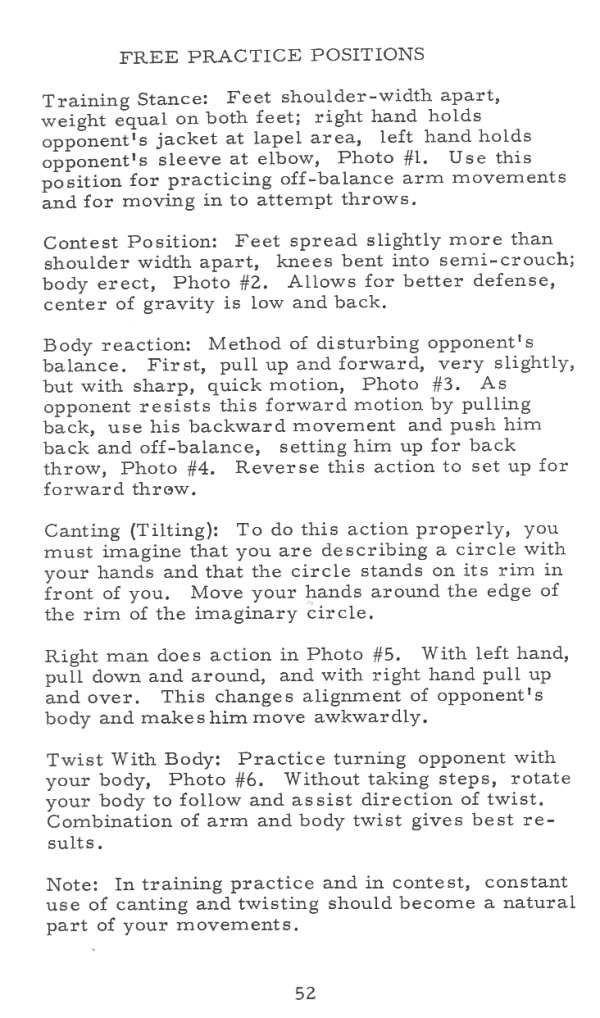jff 052

FREE PRACTICE POSITIONS
Training Stance: Feet shoulder-width apart,
weight equal on both feet; right hand holds opponent's jacket at lapel area, left hand holds opponent's sleeve at elbow, Photo #1. Use this position for practicing off-balance arm movements and for moving in to attempt throws.
Contest Position: Feet spread siightly morę than shoulder width apart, knees bent into semi-crouch; body erect, Photo #2. ALlows for better defense, center of gravity is Iow and back.
Body reaction: Method of disturbing opponent's balance. First, puli up and forward, very siightly, but with sharp, quick motion, Photo #3. As opponent resists this forward motion by pulling back, use his backward movement and push him back and off-balance, setting him up for back throw, Photo #4. Reverse this action to set up for forward throw.
Canting (Tilting): To do this action properly, you must imagine that you are describing a circle with your hands and that the circle stands on its rim in front of you. Move your hands around the edge of the rim of the imaginary circle.
Right man does action in Photo #5. With left hand, puli down and around, and with right hand puli up and over. This changes alignment of opponent's body and makeshimmove awkwardly.
Twist With Body: Practice turning opponent with your body, Photo #6. Without taking steps, rotate your body to follow and assist direction of twist. Combination of arm and body twist gives best re-sults.
Notę: In training practice and in contest, constant use of canting and twisting should become a natural part of your movements.
52
Wyszukiwarka
Podobne podstrony:
img090 Datę. Name.Marching-Standing 8:4 Starting Position: Stand with feet hip-wid
39512 img088 Bali Forward-Standing_ 8.1 Starting Position: Stand in optimal posturę with feet hip-wi
jff 040 FALLS Eleventh Fali: Advanced Back Fali, Leaping. Starting position: Natura 1 stance. Action
img093 Datę. Name.Wall Sguat-Body Mechanics 8.10 Starting Position: Stand with fee
a40(3a) EXERCISE. - READY POSITION. Stand erectj with the feet about 18in. apart, the upper&nbs
img092 Datę. Name. Starting Position: Stand with feet spread about two feet apart and with toes poin
e3(6a) EXERC1SE. READY POSITION. Sit upright on a ohair, the feet a little way apart; body upright,&
więcej podobnych podstron